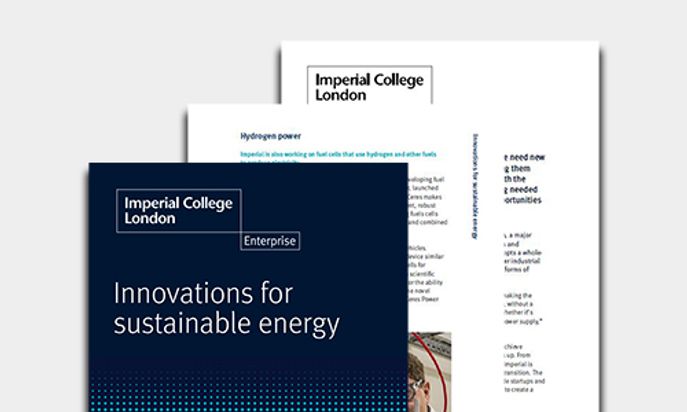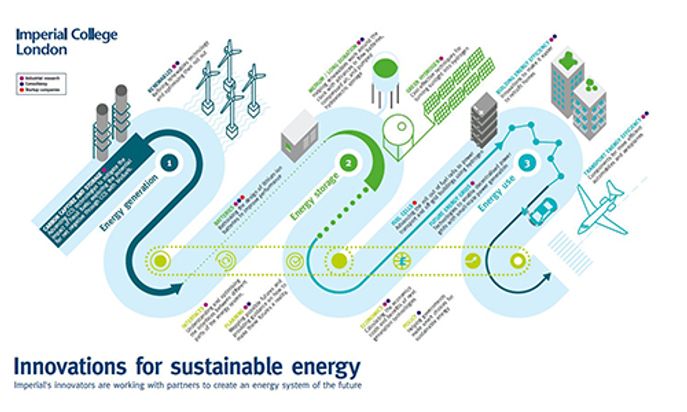Innovations for sustainable energy
To decarbonise the world’s energy systems, we need new technologies and effective strategies for rolling them out. Imperial is providing the energy sector with the technological innovation and systems thinking needed to reach net zero and create new business opportunities along the way.
Access our free sustainable energy infographic and e-book
Six Imperial innovations that can help the energy sector achieve its net zero targets
1. Renewables
Renewables have come of age, but Imperial experts are continuing to improve the technologies and the tools used to support their roll out. Existing planning tools, for example, often overlook the fact that local wind and tidal flows change once turbines are in place: This is one of the issues addressed by advanced modelling, optimisation and digital twinning tools under development at Imperial.
2. Energy storage
The intermittent nature of renewable energy means that renewables cannot by themselves power a stable energy grid. Imperial inventors are concentrating efforts on storage technologies ranging from better lithium-ion batteries, to flow batteries that use hydrogen and low-cost manganese, to pumped hydro storage. These could be used to build a stable grid based on renewables without the need for fossil fuels or nuclear power.
3. Green hydrogen
For vehicles, planes, off-grid buildings and industrial technologies that can’t easily be electrified, hydrogen could offer a zero-emission alternative to fossil fuels. Most hydrogen is currently produced using natural gas, but technologies under development at Imperial could make it possible to produce the fuel cost-efficiently with solar power.
4. Carbon capture and storage
While the world transitions away from fossil fuels, carbon capture and storage technologies could make it easier to meet global energy demands while meeting net zero emissions targets. Imperial experts are working with companies and policymakers on everything from fine-tuning the technologies to modelling their environmental impacts and economics.
5. Energy usage
To meet net zero targets, we need to use energy more smartly and efficiently. Imperial researchers and startups are working on a vast number of innovations in this space, including better building design, vehicle electrification, and tools to help electricity grids accommodate new technologies and decentralised power supply.
6. Systems thinking
To design a sustainable energy system, it’s vital to see the big picture: Bigger and better batteries, for example, won’t create the transition we need if the materials they rely on create pollution problems of their own. Imperial experts are joining together across disciplinary boundaries with partners in a range of sectors to adopt a systems approach that takes the broader view.
Get in touch to learn how innovations in sustainable energy can work for you




